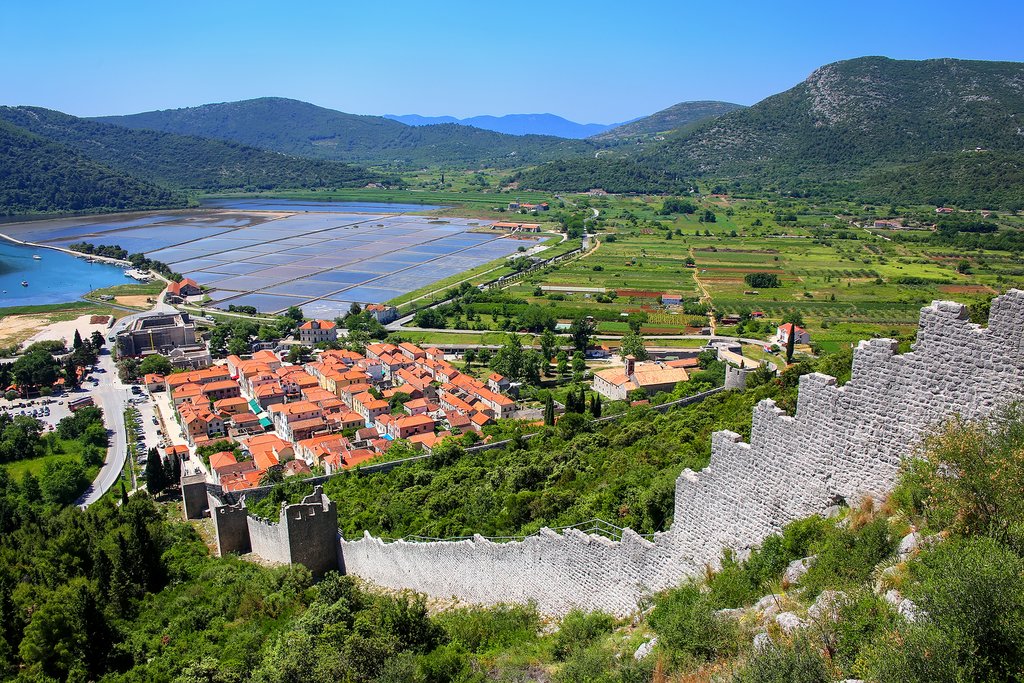Highlights
- Discover Dubrovnik's impressive Lovrijenac and Bokar fortresses
- Kayak the open sea from Dubrovnik's Banje Beach to Lokrum Island
- Climb Ston's historic defense wall for views of glittering saltpans and the Adriatic
- Join a cycling tour of Lumbarda wine country on Korcula
- Stroll along Split's seafront Riva to take in the sunset
Brief Itinerary
| Day | Highlights | Overnight |
|---|---|---|
| Day 1 | Arrive in Dubrovnik, Explore | Dubrovnik |
| Day 2 | Walking Tour of Dubrovnik, Sea Kayaking around Lokrum Island | Dubrovnik |
| Day 3 | Transfer to Korčula via Pelješac Peninsula | Korčula Town |
| Day 4 | Cycling & Wine Tasting Tour in Lumbarda | Korčula Town |
| Day 5 | Ferry to Split, Explore | Split |
| Day 6 | Depart Split |
Detailed Itinerary
Day 1: Arrive in Dubrovnik, Explore
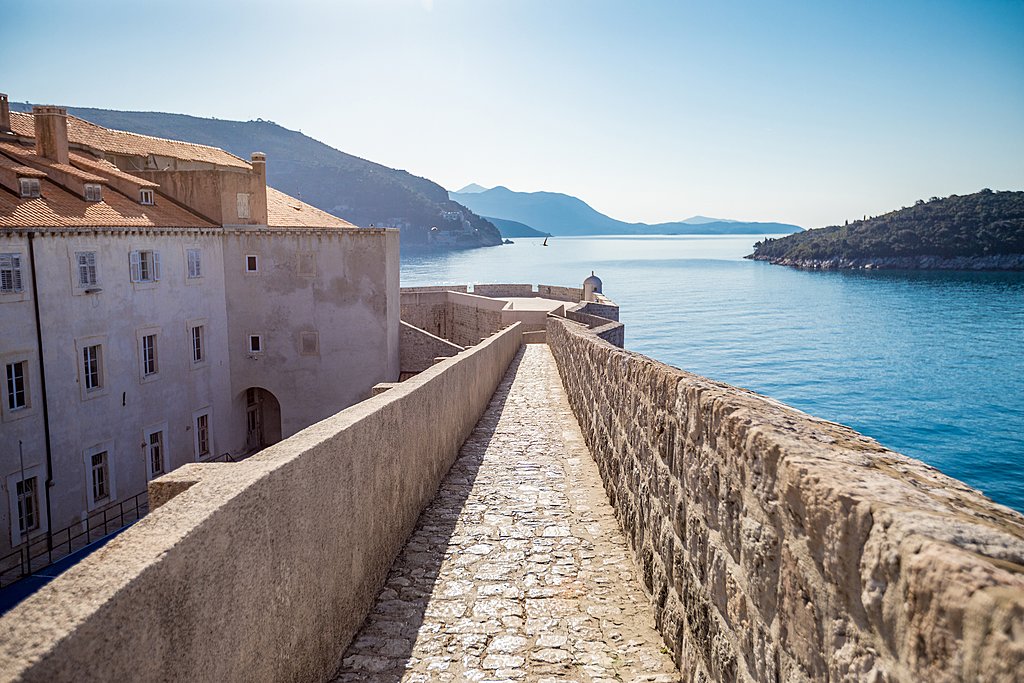
This is a treat because you'll be arriving in one of the most ancient fortress cities in Europe. Known as the "Adriatic Pearl," Dubrovnik is a piece of history. While there's evidence of settlements as far back as the Byzantine era, this area only came into its own in the 12th and 13th centuries when it was under the rule of the Venetians. Throughout the Middle Ages, it was a fortress port encircled by stone walls and filled with Baroque churches and Renaissance/Gothic palaces that still stand today.
Upon arrival at the airport, you'll transfer to your hotel for check-in. Despite being tired from the journey, you'll likely want to get out and explore. Can't-miss activities include strolling Dubrovnik's historic 75-foot walls, visiting Lovrijenac and Bokar Fortress, and walking along the smooth, limestone-paved streets of historic Old Town.
After spending some time getting to know the city, duck into one of Dubrovnik's many wine bars to relax. It's a good plan, as there's no better manner in which to celebrate your first day in Croatia than by enjoying a glass of white or red wine as the sun goes down over Dubrovnik's Old Town. For dinner, there are a number of great restaurants you can choose from.
Day 2: Walking Tour of Dubrovnik, Sea Kayaking around Lokrum Island
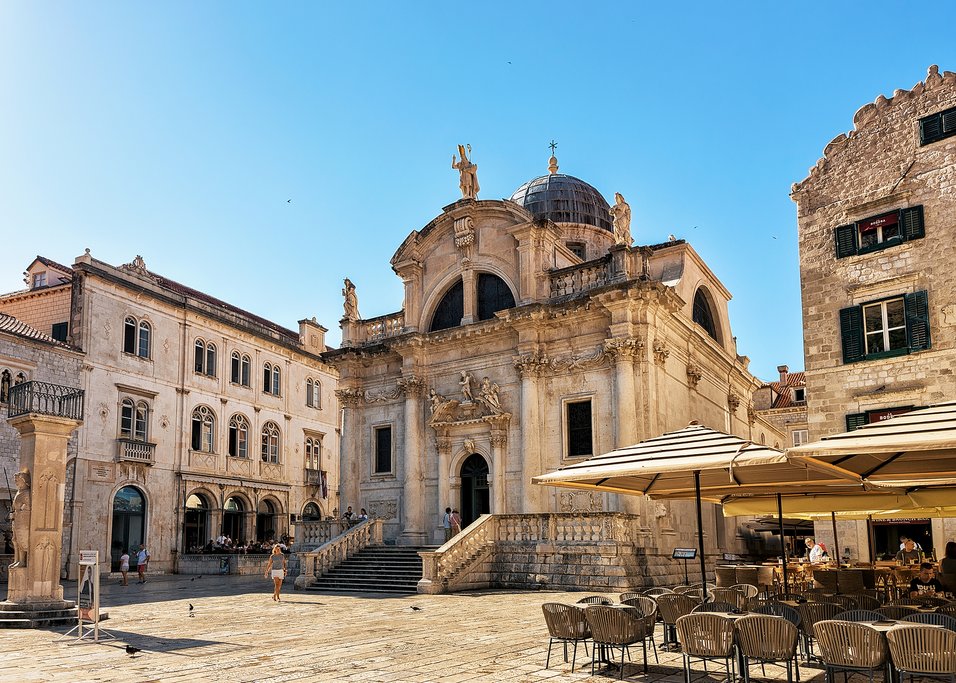
Start your day early (around 8 am) to avoid the crowds and embark on a tour of Dubrovnik, where you'll meet your expert guide outside the entrance to the medieval city at the 16th-century Pile Gate. Entering Old Town, you'll uncover centuries of the city's rich history as you listen to stories of local life and legends and of the importance Dubrovnik once held in the era of the Republic. Highlights include Onofrio's Fountain, the 15th-century Rector's Palace, Luza Square, the Church of St. Blaise (St. Vlaho), and the café-lined streets of Brsalje Street.
After touring the streets and alleys, you'll head for Lovrijenac Fortress as well as the city's impressive defensive walls, the second-largest set of city walls in the world. At certain places, the wall rises 75 feet high, offering excellent vantage points for photos of the coastline.
In the afternoon, head to the water for a guided kayaking adventure around the city and Lokrum Island—the closest island to Dubrovnik. Starting from Banje Beach, you will paddle to Lokrum Island, where you can enjoy a swim in the saltwater lake named the Dead Sea, explore the 15th-century Benedictine monastery, and trek along the carless trails through overgrown gardens. This is a great way to experience the cultural and historical sites of Dubrovnik from a unique perspective.
Chat with a local specialist who can help organize your trip.
Day 3: Transfer to Korčula via Pelješac Peninsula

Today you'll leave Dubrovnik behind and transfer about an hour northwest to the Pelješac Peninsula as you make your way to Korčula. En route, stop in the medieval city of Ston to explore one of the longest defensive stone walls in Europe (originally built to keep predators away from the town's saltpans) and discover the importance this area held in the 14th century. Enjoy beautiful views over Ston and its glittering saltpans from a parapet walkway on Ston's 3,937-foot (1,200 m) wall.
Reward your efforts with a light meal of Ston's famous fresh oysters or mussels accompanied by a glass of local dingač red wine. Should you choose, you can take a tour of one of the area's family-run wineries for a further sampling of dingač's famous reds.
When you're ready, continue your journey to Orebić to catch the ferry to Korčula. Once on the island, the afternoon is yours to discover Korčula's numerous restaurants, taverns, shops, and bars as you roam the maze of gray stone houses, alleys, churches, and squares. Check into your hotel in Old Town before heading out to explore, either on foot or perhaps on a rented bicycle, traveling from the town center to one of the secluded beaches on the island.
Driving time (Ston to Orebić): 1 hour
Ferry time (Orebić to Korčula): 20 minutes
Day 4: Cycling & Wine Tasting Tour in Lumbarda
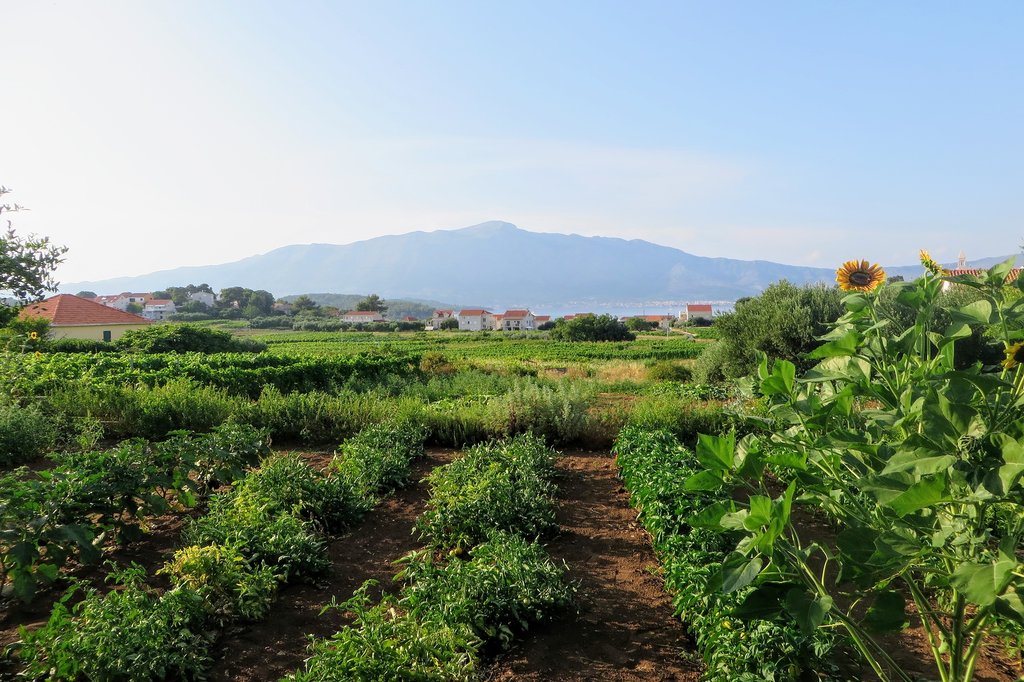
Spend the day on a cycling tour (private or with a group) across the island from Korčula Town to Lumbarda, with stops along the way to visit beaches and wineries. Pick up your bike and meet your guide in Korčula and ride out of the town south toward Lumbarda. You will cycle through fields, villages, and wineries, covering asphalt, gravel, and dirt roads with vistas opening up to the Adriatic Sea as well as to the impressive Mount Ilija on the nearby Pelješac Peninsula.
This gentle route explores the ancient and historic sites of the eastern side of the island as you work your way to the spread-out village of Lumbarda. Boasting beautiful beaches and centuries-old winemaking traditions, Lumbarda is home to grk, a white grape variety that will pair well with your lunch or dinner. Some of Croatia's best white wines are produced on Korčula, and you won't be left wanting.
You'll also have the opportunity to visit Bire Winery, a family-run winery that produces grk wine as well as its own varietals, including a rosé. All the wineries in the area produce grk, which is unique to this region due to its sandy soil and plavac mali (a red grape grown extensively across South Dalmatia that acts as a pollinator for the Grk vines).
Take some time to relax on one of Lumbarda's beaches before returning to Korčula Town for the evening.
Cycling time: 3-5 hours
Day 5: Ferry to Split, Explore

Catch a morning ferry from Korčula to Split. Upon arriving in Split, check into your hotel and settle into your accommodation before taking the rest of the day to wander Split's historic center.
Start at Pjaca Square for pretty views of white marble tiles, the Iron Gate (the western entrance to Diocletian's Palace), a Romanesque clock tower with the remains of a medieval sundial, and the 15th-century Town Hall. Stop for lunch at Trattoria Bajamont, just north of the Iron Gate. From there, visit the popular Voćnitrg or Fruit Square. Here you can enjoy Renaissance architecture influenced by Split's Venetian era. For a bit of shopping and a bite to eat, head to Marmont Street, though you'll want to head to the waterfront to catch the sunset.
In the evening, take a stroll along Split's seafront Riva to admire the waterfront views before finding the off-beat Konoba Dioklecijan restaurant, just to the left of the Bronze Gate for a bite to eat, its outdoor terrace built into the walls of Diocletian's Palace.
Ferry duration (Korčula to Split): 2.5-4 hours
Day 6: Depart Split
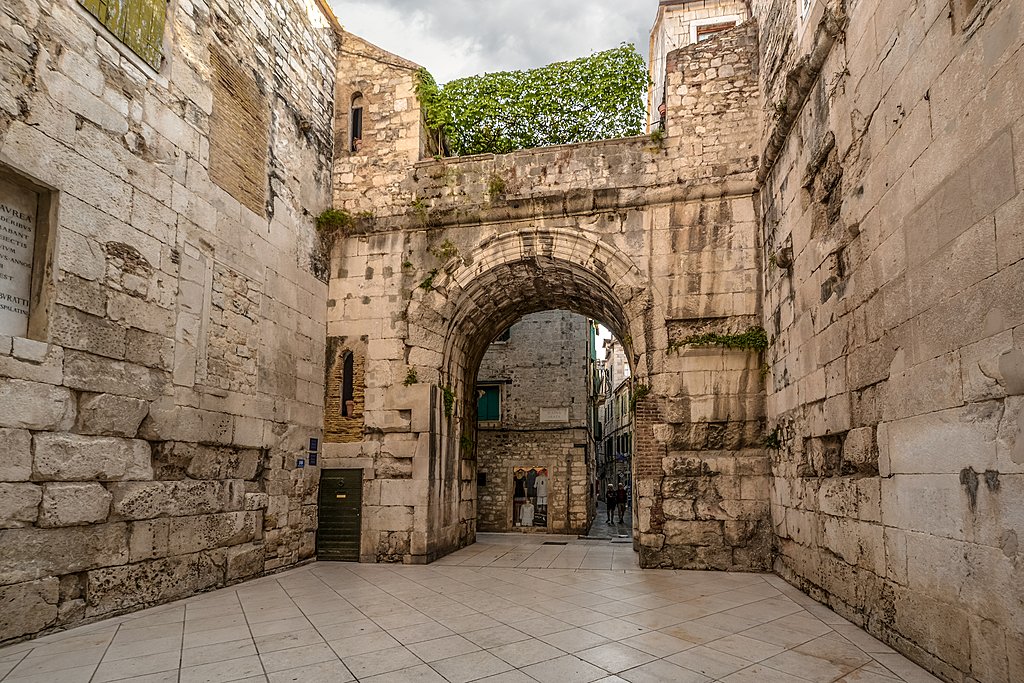
If you have a free morning before departing, check out the Green Market (Pazar Market). A lively fruit and vegetable outdoor market just east of the Diocletian Palace, this is a great place to see how the locals shop and to pick up some fruit for your flight home. Farmers from the surrounding areas of Split come into town every day to sell their seasonal local produce from sunrise to 2 pm.
Depending on traffic, it usually takes 45 minutes to travel from Old Town to the airport. Best to arrive at the airport at least two hours prior to your international departure (and with some extra time to drop off your rental car, if you have one).
More Great Croatia Itineraries
Looking for more inspiration for your trip to Croatia? Check out these other Croatia itineraries, explore different ways to spend six days in Croatia, or discover the best time to visit Croatia.
